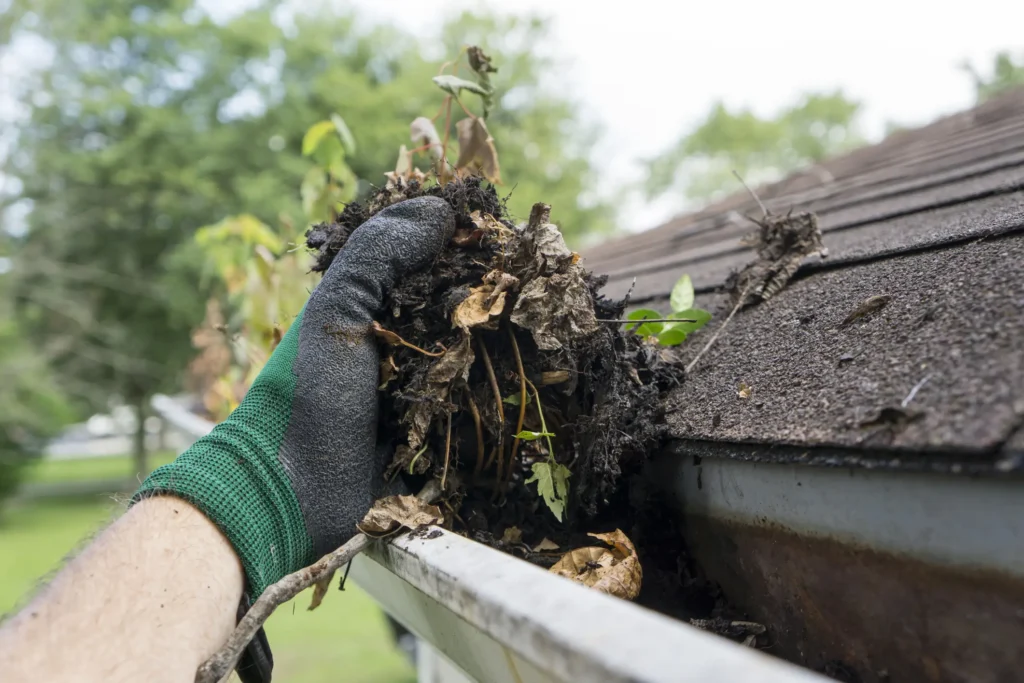A 10-step winter home maintenance checklist for North Carolina homeowners

North Carolina is known for its mild winters, but that doesn’t mean that cold snaps, freezing rain, and occasional snow never happen. And this type of winter weather can take a toll on your home. Preparing your property for winter isn’t just about peace of mind. It’s about preventing costly repairs and keeping your home running efficiently throughout the colder months. For Triangle homeowners, these winter home maintenance tips are critical for helping you protect your investment and stay comfortable all season long.
Here are 10 steps to follow before the colder weather sets in for the long haul.
1. Protect your pipes and plumbing
North Carolina’s winters can be unpredictable, and sudden temperature drops can lead to frozen pipes. Unfortunately, frozen pipes can lead to burst pipes, which can be a costly repair. That’s why you want to take the time to protect your pipes before the cold sets in. Start by insulating exposed pipes, especially in crawl spaces, garages, and basements. Make sure you disconnect your garden hoses and drain outdoor faucets. Make sure you keep your home at least 55°F, even if you’re away. And open cabinet doors near sinks during cold snaps, which allows warm air to circulate and prevents pipes from freezing.
2. Have your HVAC system serviced
A heating system works hard during cold snaps. A seasonal tune-up to prepare it for the start of cooler temperatures keeps it efficient and helps avoid a mid-January breakdown. It’s smart to schedule an inspection with a professional HVAC company every six months. During that inspection, they will replace or clean your air filters, as well as assess any necessary work to keep your system performing at its best. As you do your own winter home maintenance, be sure to seal gaps around vents and ducts. And if you haven’t already, consider a programmable thermostat to help manage your energy bill.

3. Clean gutters and downspouts
North Carolina’s fall foliage is stunning. But those beautiful leaves can clog your gutters and lead to winter drainage issues. Before winter sets in, be sure to clear debris from your gutters and roof valleys to prevent clogs and potential damage. Consider bringing in a professional gutter team to keep your gutters clean and debris-free. Next, make sure your downspouts are directing water at least 5–10 feet away from your foundation to keep your foundation protected from water damage. Finally, check for sagging or damaged sections that might cause ice dams or overflow, and repair any issues that may exist.
4. Inspect your roof
Those mile Triangle-area winters mean that major snowstorms are rare. However, heavy rain and wind are common this time of year. As part of your winter home maintenance plan, protect your roof from water and wind damage by looking for specific issues that can cause greater problems down the road. If you have missing or damaged shingles, signs of leaks in the attic, moss or mold growth, or even flashing issues around chimneys and vents, get it fixed now to prevent water damage later. Look for an experienced, licensed contractor who can tackle roof repair and replacement with ease.
5. Seal air leaks around doors and windows
Drafts can do more than chill your home. They can also raise your heating costs by hundreds of dollars each year. One way to tackle these costs is to seal the leaks where they come in. Some simple fixes include adding weatherstripping around doors and windows and using caulk to seal cracks or gaps. You can also install door sweeps to minimize cold airflow. And if you’re in an older home, consider upgrading to energy-efficient windows to help save on costs for the long-term.

6. Check smoke and carbon monoxide detectors
If you’re using fireplaces, space heaters, or gas furnaces during winter to stay warm, safety should be a top priority. A winter home maintenance task to keep on your to-do list each season is to test each of your smoke and carbon monoxide detectors and replace the batteries. Don’t forget to clean the units to remove dust buildup. And make sure you have a carbon monoxide detector near sleeping areas to keep your family protected.
7. Service your fireplace or chimney
Nothing beats a cozy fire on a chilly night or relaxing in front of a fireplace in the winter. But chimney buildup can be dangerous. Before lighting your first fire of the season, start by having your chimney professionally inspected and cleaned. Be sure to remove old ashes from your fireplace and check the damper to ensure it opens and closes properly. And don’t forget to keep a fire extinguisher nearby to ensure safety all season long.
8. Prepare your yard and outdoor areas
Even though plants go dormant, your outdoor areas still need attention. As part of your winter home maintenance plan, make sure you winterize your landscape, too. Trim branches hanging near rooflines or power lines. Protect sensitive plants with mulch or covers. Remove any debris from your foundation, which can help prevent spring pests. Put your garden tools away, and then drain and store hoses as well as winterize your irrigation systems to avoid burst lines.
9. Review homeowner’s insurance coverage
Unexpected weather events — including ice storms, downed trees, and power outages — can wreak havoc on your home. That’s why it’s wise to check your insurance coverage yearly. If you take a quick moment to verify your coverage, document your valuables, and review your deductible amounts, it will keep your needs top of mind. Make sure you understand what is and isn’t covered in winter-related incidents and adjust accordingly to keep your home safe.
10. Stock up for winter weather events
While major winter storms are infrequent in the Triangle area, it’s always best to be prepared. It’s wise to keep safety must-haves on hand, such as flashlights and batteries, blankets, bottled water, non-perishable food, firewood, and even a backup power source or generator. Being prepared reduces stress when the forecast suddenly takes a turn.
Stay ahead of winter home maintenance
A little proactive care now can help you avoid costly repairs, improve your home’s energy efficiency, and keep you and your family comfortable all winter long. North Carolina’s climate may be mild, but it still pays to give your home the seasonal attention it deserves.



